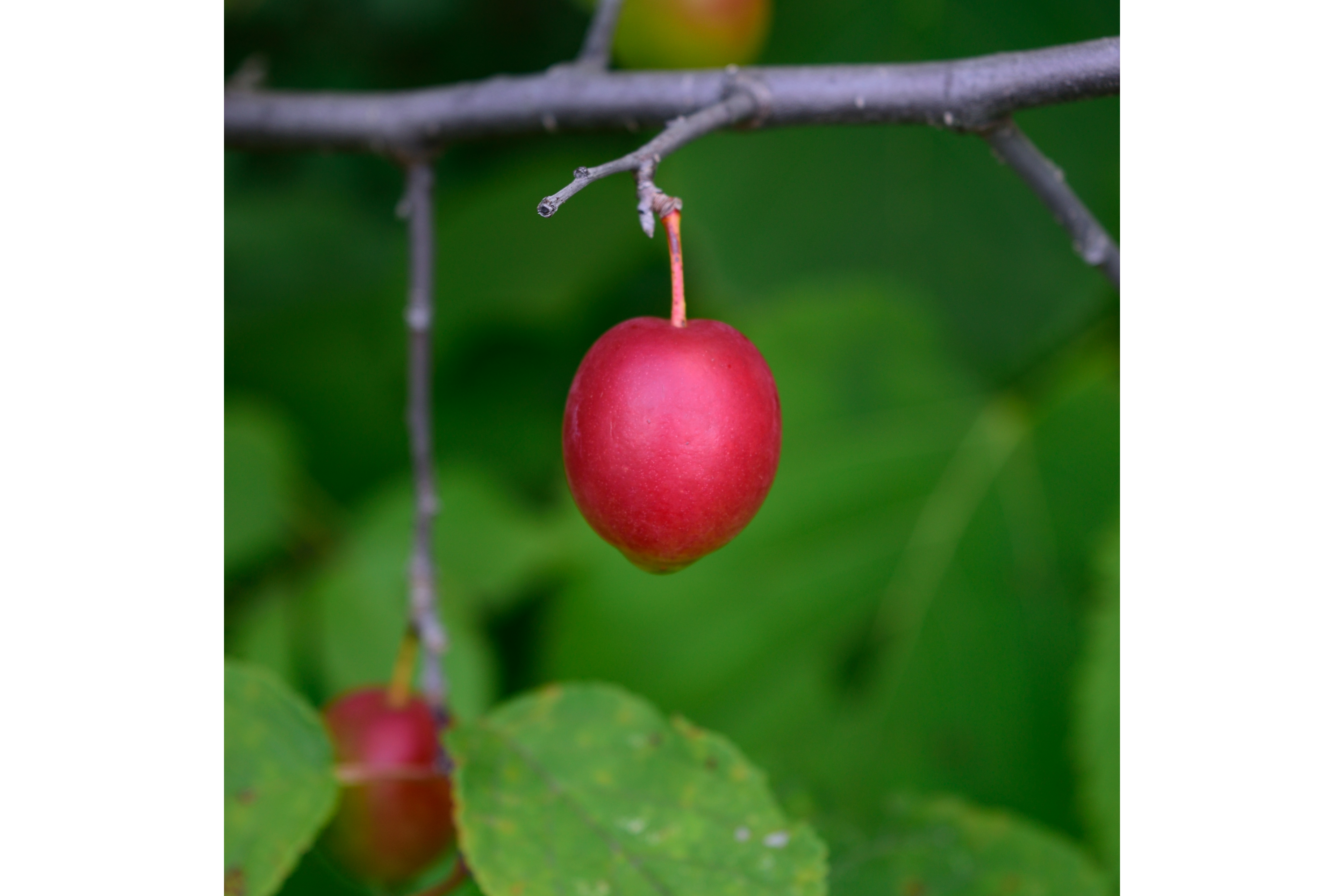Blackthorn
(Prunus americana)

Description
Prunus spinosa, called blackthorn or sloe, is a species of flowering plant in the rose family Rosaceae. It is native to Europe, western Asia, and locally in northwest Africa. It is also locally naturalized in New Zealand, Tasmania and eastern North America. The fruits are used to make sloe gin in Britain and patxaran in the Navarre autonomous community of Spain. The wood is used to make walking sticks, including the Irish shillelagh. Prunus spinosa is a large deciduous shrub or small tree growing to 5 metres (16 ft) tall, with blackish bark and dense, stiff, spiny branches. The leaves are oval, 2–4.5 centimetres (0.79–1.77 in) long and 1.2–2 centimetres (0.47–0.79 in) broad, with a serrated margin. The flowers are about 1.5 centimetres (1⁄2 in) in diameter, with five creamy-white petals; they are produced shortly before the leaves in early spring, and are hermaphroditic and insect-pollinated. The fruit, called a "sloe", is a drupe 10–12 millimetres (3⁄8–1⁄2 in) in diameter, black with a purple-blue waxy bloom, ripening in autumn and harvested – traditionally, at least in the UK – in October or November after the first frosts. Sloes are thin-fleshed, with a very strongly astringent flavour when fresh. Blackthorn usually grows as a bush but can grow to become a tree to a height of 6 m. Its branches usually grow forming a tangle. Prunus spinosa is frequently confused with the related P. cerasifera (cherry plum), particularly in early spring when the latter starts flowering somewhat earlier than P. spinosa. They can be distinguished by flower colour, pure white in P. spinosa, creamy white in P. cerasifera. In addition, the sepals are bent backwards in P. cerasifera, but not in P. spinosa. They can be distinguished in winter by the shrubbier habit with stiffer, wider-angled branches of P. spinosa; in summer by the relatively narrower leaves of P. spinosa, more than twice as long as broad; and in autumn by the colour of the fruit skin purplish black in P. spinosa and yellow or red in P. cerasifera. Prunus spinosa has a tetraploid (2n=4x=32) set of chromosomes. Like many other fruits with pits, the pit of the sloe contains trace amounts of hydrogen cyanide.
Taxonomic tree:







